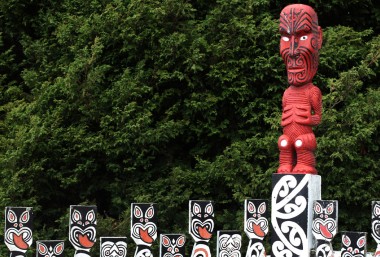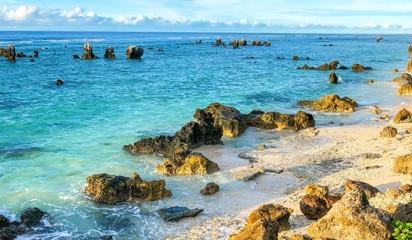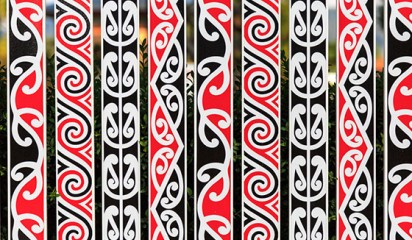We now live, work, and play in a digital and global era. Due diligence is even more important when prosecuting trade marks with creators and businesses operating in a fast-paced world. One important consideration that is often lost amidst commercial evaluations is cultural sensitivity. In New Zealand, the Māori Trade Mark Advisory Committee (MTAC) plays an important role in this regard.
Following the assent of the New Zealand Trade Marks Act 2003, MTAC was established to “address Māori concerns relating to the registration of trade marks that contain a Māori sign, including imagery and text”. As an authority, they aim to minimise the risk that people and organisations may inadvertently register intellectual property likely to offend Māori.
The function most relevant to this article is stated in 3.2.1 of the IPONZ terms of reference, “considering trade mark applications and providing written advice as to the likelihood of offensiveness to Māori”. It is worth noting that the Māori language (Te Reo Maori) is a taonga – a versatile word that refers to something treasured, as it is used commonly with cultural or spiritual concepts and objects.
When might something be referred to MTAC?
As stated above, the general ambit of MTAC is to address Māori concerns about potentially offensive trade marks by reviewing applications that are flagged by IPONZ examiners. Under the current regime, a MTAC review of a trade mark application will be triggered where an Examiner notes that a trade mark contains Māori words or imagery.
The trigger threshold is relatively low for words. Trade marks that are or contain words in Te Reo will be forwarded to MTAC for review. This applies to all languages, regardless if a word has a meaning in a different language. If it has a meaning in Te Reo or in part comprises a word, it will be referred to MTAC.
One common source of referrals to MTAC is trade marks consisting of Japanese words. The Japanese language is linguistically similar to Te Reo, and there are a number of words that have different meanings in both languages. For example, Tokotoko in Te Reo can mean “to walk with a stick”. Conversely, “Tokotoko” is a Japanese onomatopoeia for the sound of something walking fast in short steps.
Regarding Māori imagery, this is generally broken down into three distinct features by IPONZ:
- Curvilinear designs (contained by or consisting of a curved line or lines) as depicted in moko (tattooing), kowhaiwhai (rafter patterns), and whakairo (carving).
- Rectilinear designs (contained by, consisting of, or moving in a straight line or lines) as depicted in tukutuku (ornamental paneling) or taniko (embroidery).
- Designs incorporating Māori objects.
Before applying in New Zealand, any prospective applicant or agent needs to consider these points. It is prudent to verify whether or not a potential trade mark contains Māori words or imagery prior to applying early in the trade mark process. Potential applicants should consider whether it is appropriate to adopt Māori words or imagery. Education and consultation are important processes in this regard.
There are resources to assist with this process, such as online Māori dictionaries. However, it is harder to do so regarding Māori imagery, particularly in the case of international agents or Applicants, as they are likely to be unaware of what constitutes a Māori design and contextual uses of those designs. In such a case, it is best to discuss their mark with a New Zealand based trade mark professional.
What is MTAC’s role in the trade mark registration process?
When an application is referred to MTAC, the review typically takes a few weeks but can extend to a few months. If MTAC considers the trade mark non-offensive, the Applicant will be notified, and the application can proceed as normal (other objections may need to be addressed).
If the trade mark is considered offensive, MTAC may issue a s 17(1)(c) objection under the Trade Marks Act 2003. Under this section, the Commissioner must refuse registration if the mark is likely to offend a significant section of the community, including Māori. Examples of this include granting an Applicant exclusive use of a word where that word is considered offensive or inappropriately related to the goods and services applied for. A fairly common example is a trade mark containing Māori imagery that is intended to be used for alcohol.
This is an absolute ground for not registering a trade mark and can be hard to overcome. An applicant can make submissions arguing against this finding, but it is unlikely they will be accepted.
When an objection is raised, MTAC may also issue a post-finding recommendation that an Applicant approach Taura Whiri i Te Reo Māori, the Māori language commission, to find a more appropriate term for their trade mark. Naturally, you cannot amend the mark itself, and should a more appropriate word be found, a new application would have to be made.
Expected developments for MTAC
Revised IPONZ practice guidelines are expected to be issued later this year. The details are yet to be released, however we expect to see a general trend towards a more comprehensive framework.
The predicted approach is a move away from looking strictly at paper applications to a broader approach. The idea is to protect Te Reo as a taonga within the frame works of trade mark protection. This would include educating applicants and providing consultation. While reviewing trade marks on paper applications works as an extension of the law, a more comprehensive approach will address both cultural concerns and better educate applicants.
It is expected that the IPONZ guidelines will be updated this year, to include more guidance to those seeking to protect marks that comprise or contain elements of Māori culture. But what would a comprehensive approach look like? We can look to recent changes and note developments there.
Two notable changes where a pattern seems to emerge. First, there have been increased instances of applicants being asked to provide more information on the source and adoption of their trade mark prior to MTAC issuing its determination. For example, did the applicant carry out consultation prior to brand adoption, including the use of Taura Whiri i Te Reo Māori, the Māori language commission, to understand the meaning of the trade mark? Was a cultural integrity scorecard and framework used when developing the brand? Is the impact of the use (not just registration) of the trade mark considered?
Secondly, when MTAC determines that there is an issue with the use of a Te Reo word there has been more transparency on timeframes and the process the applicant is going through.
This shows a trend towards a more comprehensive and holistic system where applicants are better informed prior and during the process. It is likely that this is also a move away from MTAC examining strictly on the paper application towards a view of the trade mark as a whole in consideration of the Applicant’s use.
As it stands, MTAC fulfils its role in the system excellently. But reviewing trade marks solely based on one section of legislation can only do so much. In the future, the consideration is likely to be based on whether it is culturally appropriate to use the trade mark, and whether the applicant has undertaken the proper process - such as consulting with Iwi. This would echo a trend seen in other New Zealand government agencies where Māori ideas and concepts are being embraced.
Ultimately, this gives MTAC more factors to consider away from the sometimes-rigid structure of legislation. Greater flexibility means that it will be easier for Te Reo, Māori designs and other taonga to be protected.
It is important for applicants to understand and respect Te Reo and Māori culture as this is the best way to avoid any misuse.
Conclusion
There is a clear and ever-present danger of commercial exploitation of culture in the world of trade marks. The Māori Advisory Committee has an important role now and into the future to protect mātauranga Māori and tikanga Māori (Māori worldview, culture and protocols).
Should you wish to file a trade mark in New Zealand, it is prudent to be aware of all factors that may affect the registration of your mark. If you would like guidance on navigating this, please reach out to a member of the AJ Park trade mark team.
An edited version of this article was first published by Managing IP. AJ Park is Managing IP’s international correspondent for New Zealand.












